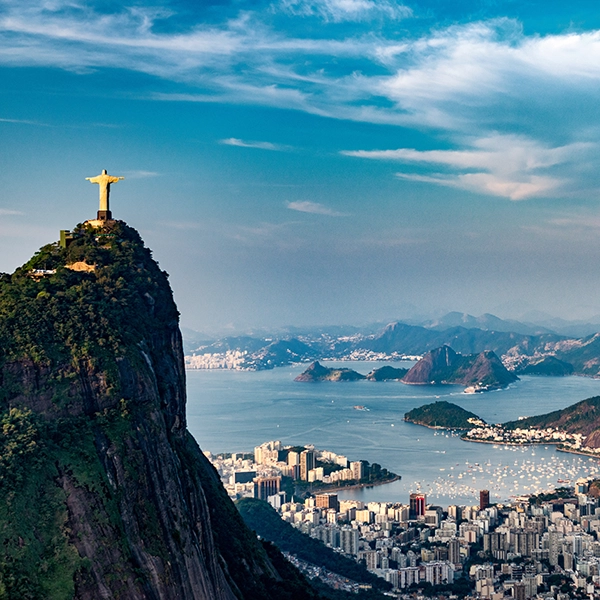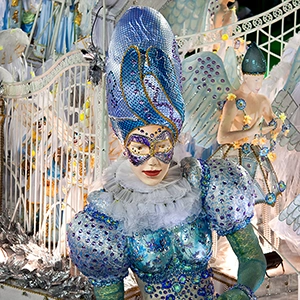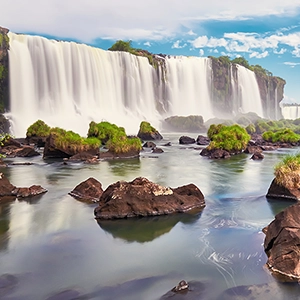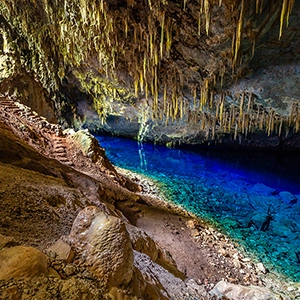Visit The Iconic Christ The Redeemer Statue In Rio De Janeiro

Rio de Janeiro, Brazil, is home to an iconic structure that, over the years, has become a symbol of the city and an emblem of its rich cultural history. The Christ the Redeemer statue is hailed as a breathtaking masterpiece, a testament to human achievement and an awe-inspiring representation of the Christian faith. This massive, Art Deco-style statue was designed and built by the French sculptor Paul Landowski, in collaboration with Brazilian engineer Heitor da Silva Costa, and was inaugurated in 1931. It is a must-see landmark for anyone visiting Rio, offering a unique cultural experience and a spectacular view of the city from the peak of the Corcovado Mountain, where it majestically stands.
A Brief History of the Christ the Redeemer Statue
The idea of constructing a significant religious monument over Rio de Janeiro was first proposed in the 1850s by a local priest, Pedro Maria Boss. However, it wasn't until 1921, when the Catholic Circle of Rio proposed the construction of the statue in commemoration of the city's 100th anniversary of independence, that the project began to take shape. The Brazilian government held a design competition that was won by the Brazilian engineer Heitor da Silva Costa. Costa enlisted the help of the French sculptor Paul Landowski to bring the statue to life.
The construction of the Christ the Redeemer statue started in 1922 and lasted for almost a decade. The project posed significant challenges, such as transporting the huge pieces of the statue, which were carved in France, up the 710-meter-high (2,300-foot) Corcovado Mountain. The project also faced funding issues, which were solved through the contributions of the Brazilian Catholic community. The statue was finally unveiled to the public on October 12, 1931.
Design and Features of the Christ the Redeemer Statue
The Christ the Redeemer statue stands at an impressive 30 meters (98 feet) tall, with a 28-meter (92-feet) wide arm span. It is made of reinforced concrete and soapstone, chosen for its weather-resistant qualities and availability at the time. The design of the statue reflects the Art Deco style prevalent in the 1920s and 1930s. The pose, with open arms stretched out horizontally and head bowed, symbolizes a warm embrace to the people and conveys a message of peace and redemption.
The choice of materials and construction techniques played a significant role in the statue's longevity. The reinforced concrete core provides the structure while the soapstone cladding offers additional protection against the elements. Interestingly, the construction of the Christ the Redeemer statue employed mosaic techniques borrowed from ancient Rome, with an estimated 6 million small tiles used in the mosaicwork covering the statue's surface.
Getting to Christ the Redeemer
Visiting the Christ the Redeemer statue is a relatively easy, yet adventurous, endeavor. First, you will need to get to the Cosme Velho neighborhood, where you can find the Trem do Corcovado, the cogwheel train that has been operating since 1884. This train takes the visitors up the steep Corcovado Mountain, through the lush, green Tijuca Forest, to the statue's base. The train ride is a unique experience in itself and provides an opportunity to witness the beautiful scenery of the region.
Alternatively, you can choose to reach the Christ the Redeemer statue by using a shuttle van service leaving from specific locations in the city, such as Largo do Machado, Copacabana, and Praça do Lido. If you prefer a more challenging route, you can hike to the statue by following the Parque Lage-Corcovado trail, a 2.5-hour hike through the Tijuca Forest, with its diverse flora and fauna.
The Breathtaking Views from the Christ the Redeemer Statue
Upon reaching the peak of the Corcovado Mountain, the breathtaking panoramic view of Rio de Janeiro is sure to leave you mesmerized. Apart from the imposing view of the Christ the Redeemer statue itself, you will be treated to an unrivaled view of the city. Iconic landmarks like Copacabana Beach, Ipanema Beach, the Maracanã Stadium, the Rodrigo de Freitas Lagoon, and the Sugarloaf Mountain can all be seen from this vantage point. It is one of the best ways to experience the beauty of Rio and create lasting memories of your visit.
Best Time to Visit Christ the Redeemer
As one of Rio de Janeiro's most popular tourist attractions, the Christ the Redeemer statue can get quite crowded, especially during the peak tourist seasons. To avoid the crowds and have the best experience, it is recommended that you visit the statue during the off-peak hours, just after the train station opens at 8 a.m., or late in the afternoon. Another factor to consider when planning your visit is the weather – the statue is often shrouded in clouds, obstructing the view. A clear, sunny day will allow you to fully appreciate the breathtaking panorama.
The Christ the Redeemer statue in Rio de Janeiro is an iconic landmark that offers visitors a unique cultural experience and a view of the city that is unparalleled. As a symbol of peace and redemption, embraced by the outstretched arms of Christ, there is little wonder that this statue has become such a popular destination for tourists from around the world. Capture the perfect panorama atop Corcovado Mountain and create unforgettable memories on your next visit to this beautiful city, and let the towering Christ the Redeemer serve as one of the enduring highlights of your travel experiences.









